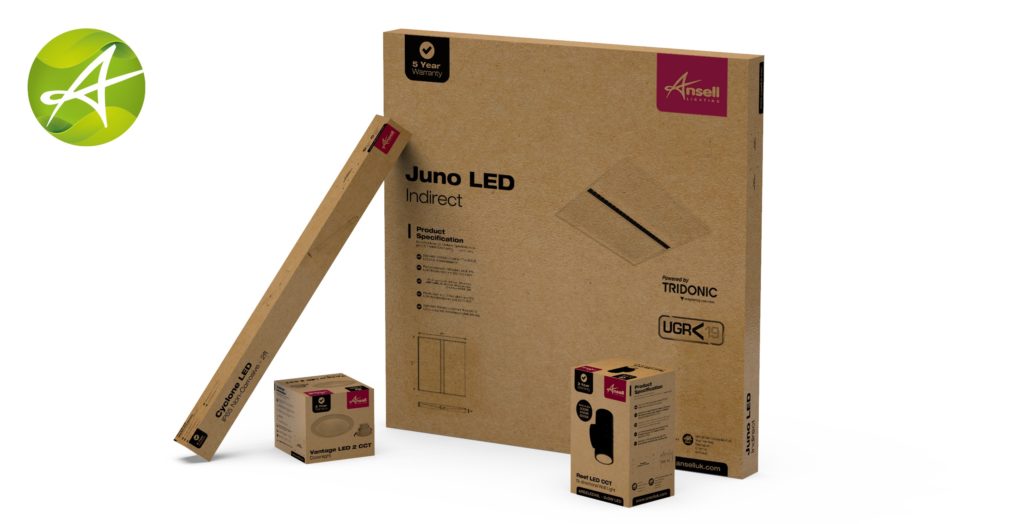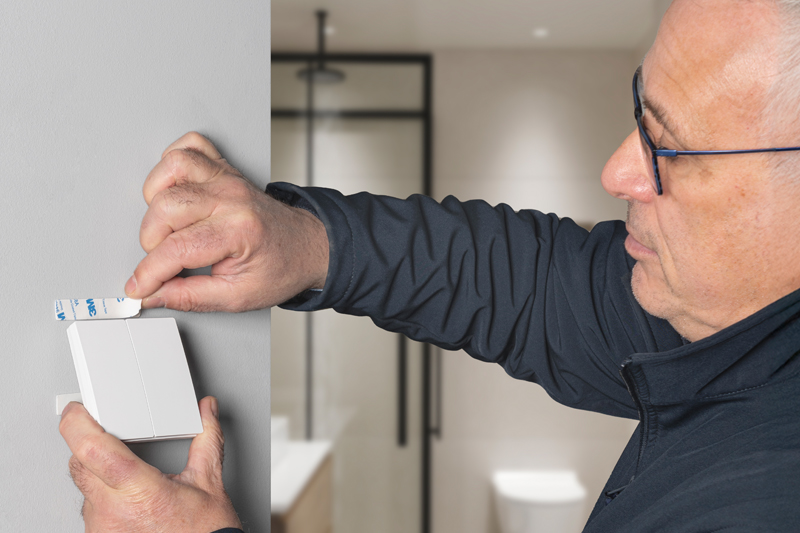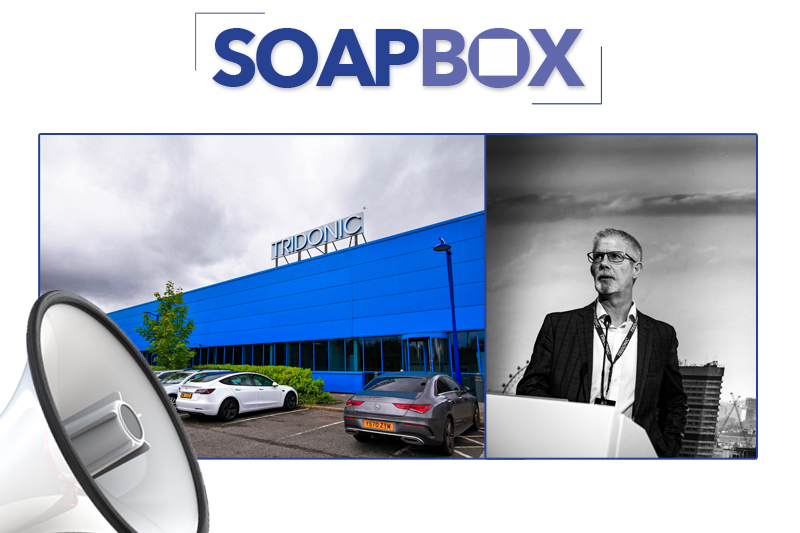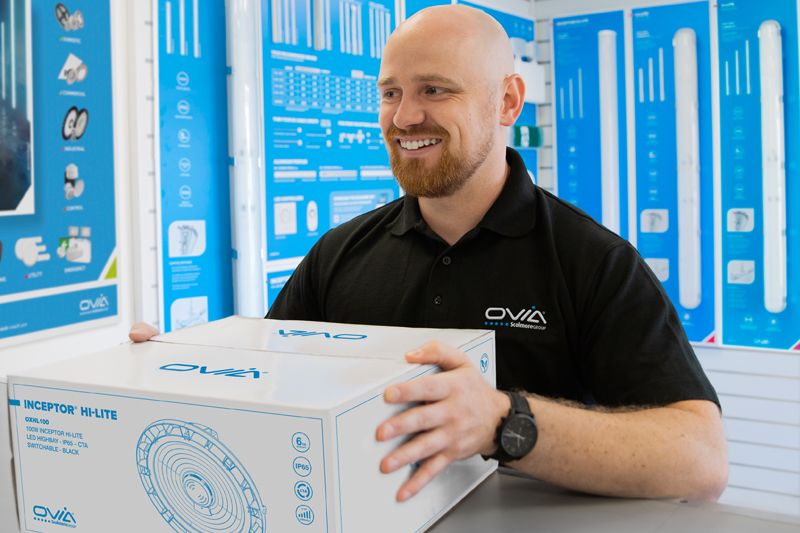Anthony Parkinson, Technical Compliance Manager at Ansell Lighting, explains what measures are being taken to support the company’s commitment to sustainability.
Sustainability is no longer a buzzword; it’s a core business principle. In the lighting industry we’ve seen a shift towards greener practices both in terms of use – thanks to smart lighting – and durability and longevity – due to product development.
At Ansell Lighting we have been at the forefront of creating greener products for many years – releasing our first low energy LED products in 2004.
As a responsible manufacturer we realise there are many more measures that can be undertaken to reduce carbon and waste footprint and this decarbonisation of direct and in-direct emissions supports our goal of achieving Net Zero.
We have worked closely with our manufacturing partners to ensure they minimise how their operations negatively affect the environment and that they comply with the associated laws and applicable compliance, which has assisted in developing a culture of environmental awareness and mindset of sustainable operation.
Environmental champions
Internally, our innovative Green Team – a group of environmental champions within the business who promote sustainability – consistently re-evaluate the way we do things and look for innovative solutions to reduce waste and to do more with less.
While we have undertaken the most obvious and necessary things such as getting rid of single use plastic waste; introducing fully recyclable packaging; reducing the footprint of our fleet of vehicles; and recycling as many spare parts as we can, including empty bodies and drivers, we have also looked at the bigger picture.
By making changes to key products, such as adding power selectability and CCT, or removing drivers, we have been able reduce the number of stock keeping units (SKUs) required for stock.
And more than just changing our packaging to unbleached, fully recycled and recyclable brown cardboard – one of the most environmentally friendly packaging materials – which in itself removed 16 tonnes of plastic from our protective packaging in 2023, we have also ensured fixing kits are now supplied in small paper bags, with biodegradable paper protecting the products.
More recently we have removed more than half of the paper guides and instructions from packaged products. The installation instructions for the specific product are still included, but all the generic information and master safety instructions can now be accessed simply by scanning the QR code on the pictorial instructions. This simple switch is set to help us save 23.1 tonnes of paper and avoid 30.5 tonnes of CO2 this year alone and reduce the waste for our customers to dispose of.
Supporting our customers
But of course it is not just about reducing our carbon footprint. It’s about supporting our customers in reducing theirs and ensuring the end user ends up with a durable, energy efficient lighting installation that delivers what they need.
The benefits of LED lighting are well publicised – using around 80% less energy than traditional alternatives and maintenance is also low cost as LEDs last for around 30,000 hours without overheating or developing faults. Communicating the benefits to our customers so they can make the right recommendations to theirs is key.
We recently launched our new Pace Plus panel lights and, in order to support our customers, we carried out a comparison to bring to life the savings that can be made by updating luminaires.
We were able to demonstrate that when comparing the use of 12 generic panel lights (30W and 100lm/W) with 12 Pace Plus panels (15W and 185lm/W) in a common classroom setting Pace Plus used 50% less energy to achieve the same results – the generic panels use 118kg of CO2 per year and cost £138 to operate, while Pace Plus use 58kg of CO2 per year and cost £68 to operate. That’s a total saving of 60kg of CO2 and £70. To put that into perspective, a medium-sized school with 15 classrooms of similar size would save 900kg of CO2 and £1,050 a year.
Of course smart lighting plays a huge role in the increased energy efficiency of lighting projects – when you consider that up to 40% of energy consumption in commercial buildings can be attributed to lighting, making sure it is only used when and where it is needed is vital in reducing bills.

Warehouse upgrade
Reflecting this, in one of our latest green initiatives, we installed a significant upgrade of the lighting in our main warehouse and distribution hub in Warrington. Improving energy efficiency, reducing ongoing maintenence costs, strengthening sustainability and providing more flexibility, we refitted this key area with Z LED Performance and Z LED Linear Opti-X luminaires, and integrated them with our OCTO connected lighting system.
As well as promoting improved performance, enhanced visual comfort and on-site safety for our colleagues, it delivered an instant reduction in energy consumption and cost savings, which equate to nine tonnes of CO2 emission savings each year and payback on investment in two years.
This was definitely a case of practising what we preach, but also demonstrating that as an industry there are a multitude of ways to support sustainability.
For more information, click here
Find more feature articles here





